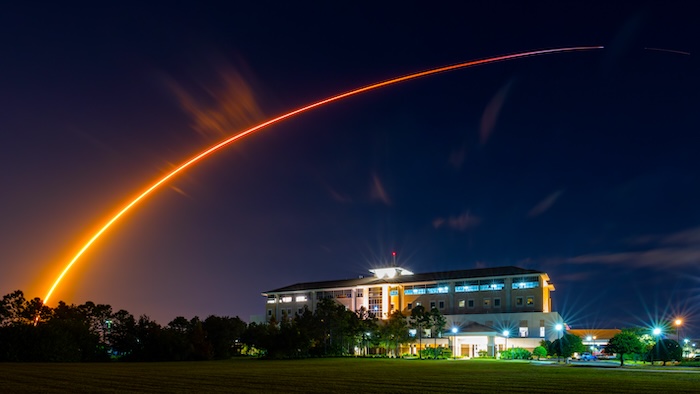SpaceX Pushes Toward Future of High-Cadence Rocket Launches, Multi-User Spaceports
By Space Coast Daily // September 22, 2025
SpaceX has been working with NASA, the U.S. Space Force, the FAA, and other partners to modernize America’s launch capabilities

BREVARD COUNTY, FLORIDA – SpaceX is accelerating its efforts to transform America’s launch sites into high-frequency, multi-user spaceports.
With Falcon rockets on pace for more than 100 launches from Florida in 2025 and the Starship program advancing, the company is working alongside federal partners to make rocket launches as routine as airline departures.
In March 2025, astronauts with the Fram2 mission observed a Falcon 9 rocket lifting off while on their way to their own launch. For many, the moment symbolized a future where rocket launches could become as commonplace as airline departures.
Founded in 2002, SpaceX has grown into the world’s leading launch services provider, offering missions for astronauts, satellites, and other payloads. The company has made clear its long-term objective: making life multiplanetary while continuing to deliver benefits for life on Earth.
To support this vision, SpaceX has been working with NASA, the U.S. Space Force, the FAA, and other partners to modernize America’s launch capabilities.
Company leaders argue that spaceports must evolve to operate more like airports, with multiple launches per day from various providers. Achieving that goal, they say, requires significant investment in infrastructure, operational tools, and research to ensure safety and environmental stewardship.

Already, Falcon rockets are on pace to launch more than 100 times from Florida in 2025. That activity has been possible, according to the company, because of collaboration across government and industry.
SpaceX has also invested heavily in ground systems, communications, and propellant storage to support its rapid cadence without disrupting other operators. For its next-generation Starship rocket, the company is building its own methane production and air separation facilities to reduce strain on existing supply chains.
Public safety remains a central focus. SpaceX has conducted years of research on methane-fueled rockets to refine blast danger zones and reduce the size of cleared areas around launch pads and flight paths. The company is sharing its findings with federal regulators in hopes of shaping future safety standards for new launch systems.

Cape Canaveral and the surrounding Space Coast remain at the heart of these efforts. SpaceX already operates launch pads at both Kennedy Space Center and Cape Canaveral Space Force Station, and has plans to expand Starship operations in Florida. Company officials emphasize that they coordinate closely with regulators, the Coast Guard, and the aviation community to minimize impacts on fishing, shipping, and air travel.
The broader backdrop is a growing national demand for access to space. U.S. policy emphasizes the need for a strong commercial launch sector to support defense, science, exploration, and economic growth. Programs such as NASA’s Artemis lunar missions rely on this capacity.
SpaceX leaders believe the key to meeting that demand lies in turning spaceports into hubs capable of sustaining frequent, multi-operator launches. With Falcon rockets already flying every few days, and with Starship development underway, the company says the path toward airport-like operations is already taking shape.













